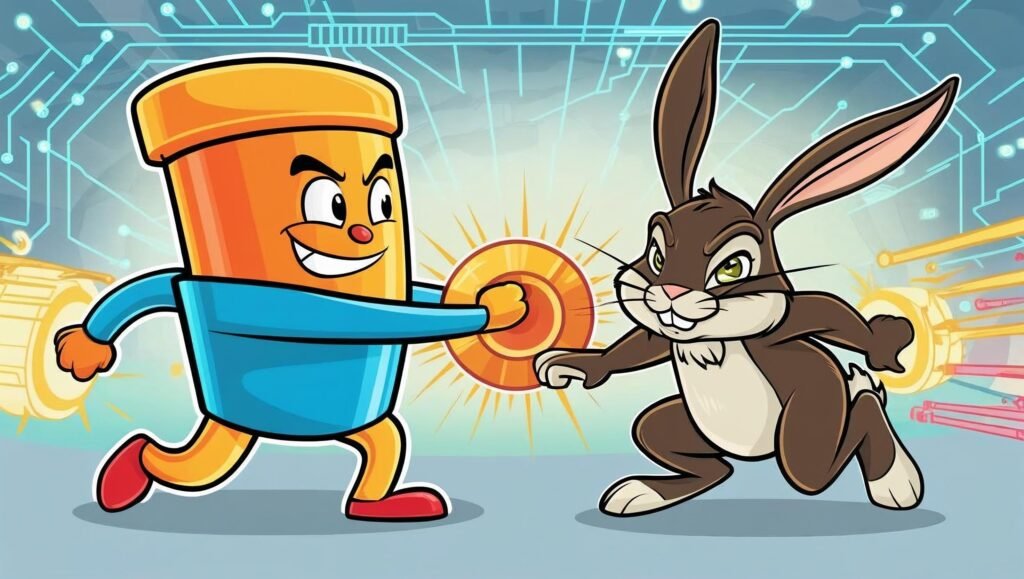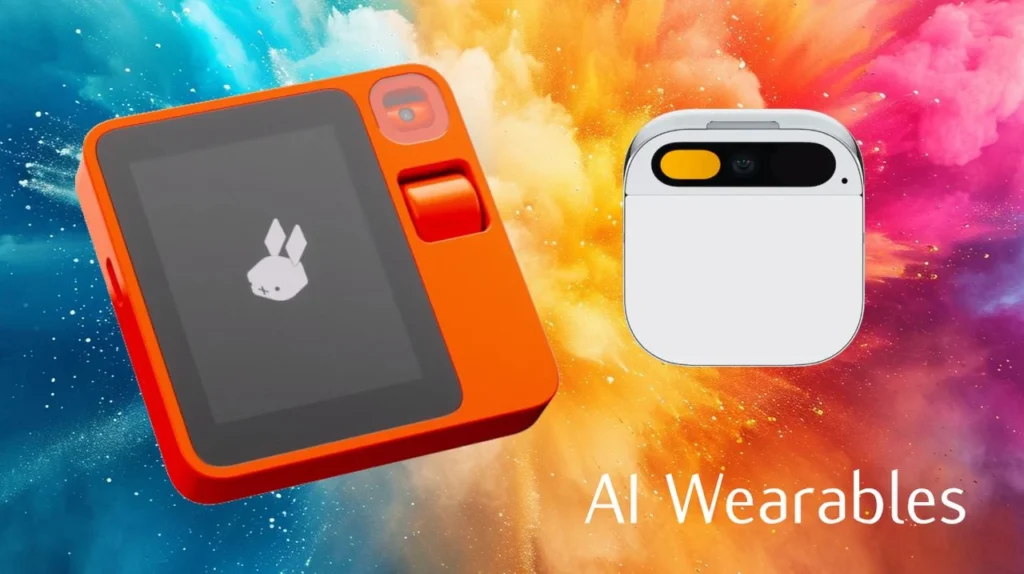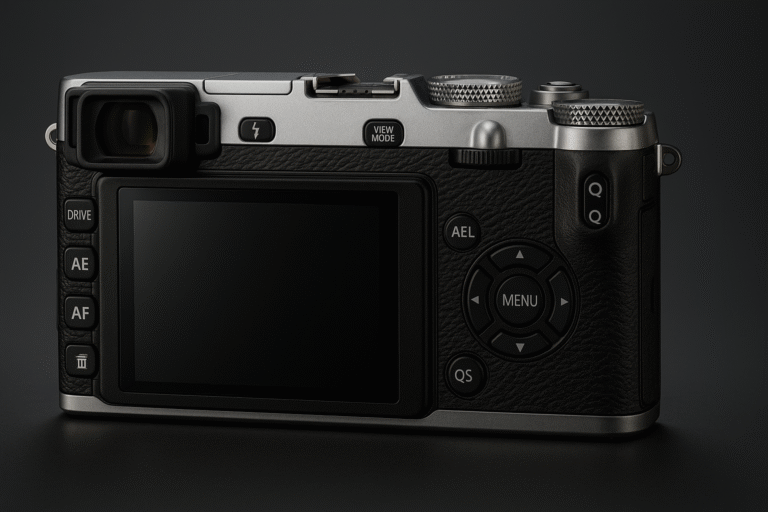
In 2025, AI-powered personal assistants are no longer limited to smartphones and smart speakers. Two of the most innovative AI devices on the market, the Humane AI Pin and the Rabbit R1, promise to revolutionize how we interact with technology. But which one is the better choice?
These AI assistants are not only enhancing user experiences but are also part of the larger AI revolution that is shaping industries worldwide. If you’re curious about how AI is transforming different fields, check out our detailed article on Revolutionary AI Technologies of 2025.
In this article, we’ll compare these two futuristic gadgets based on their features, performance, usability, and overall value to determine which AI assistant is worth your investment.
Humane AI Pin: A Wearable AI Companion
Key Features
- AI-Powered Voice Assistant – Uses OpenAI’s GPT model for natural conversations.
- Projection Display – Projects information directly onto your hand.
- Gesture Controls – Operates without a screen using hand gestures.
- Standalone Device – Works independently without needing a smartphone.
- Privacy-Focused – No wake words; activates when touched.
This cutting-edge AI wearable is part of the evolving landscape of AI-powered devices designed to increase efficiency and productivity. If you’re interested in how AI is streamlining business operations, don’t miss our article on Best AI Business Ideas: How to Leverage AI for Profit in 2025.
Pros
✅ Completely screenless, making it unique in the AI space.
✅ Designed for hands-free use, ideal for multitasking.
✅ Strong emphasis on privacy and security.
✅ Can replace a smartphone for simple tasks.
Cons
❌ Limited app support compared to traditional smartphones.
❌ Expensive compared to other AI assistants.
❌ Early software version with some bugs and limitations.
Rabbit R1: The Pocket AI Assistant
Key Features
- Large Action Model (LAM) – Learns how to interact with apps and services.
- Rotating Camera – Functions as a scanner and visual assistant.
- Voice-Activated AI – Uses natural language processing for smooth conversations.
- Compact Design – Small, lightweight, and portable.
- Deep App Integration – Works with apps like Spotify, Uber, and more.
AI assistants like Rabbit R1 are reshaping how we interact with technology. This is just one example of how AI is changing everyday life, much like how AI is transforming education and learning. If you want to explore this further, read our article on How AI Is Changing Education: The Future of Learning.
Pros
✅ Affordable compared to Humane AI Pin.
✅ Physical interface with a small touchscreen.
✅ Can execute complex tasks by learning app interactions.
✅ Portable and easy to carry around.
Cons
❌ Requires a smartphone for some functionalities.
❌ Battery life is relatively short.
❌ AI capabilities are still developing.
Feature Comparison: Humane AI Pin vs. Rabbit R1
| Feature | Humane AI Pin | Rabbit R1 |
|---|---|---|
| AI Model | OpenAI GPT-4 | Proprietary LAM |
| Screen | No screen, uses projection | 2.88-inch touchscreen |
| Controls | Touch & voice-based | Touch, voice & rotating camera |
| Camera | No traditional camera | Rotating camera for scanning |
| Privacy | No wake words, touch-activated | Standard voice activation |
| Smartphone Dependency | Works standalone | Requires smartphone for some tasks |
| Battery Life | Moderate (~8 hours) | Shorter (~6 hours) |
| Price | Expensive (~$699) | More affordable (~$199) |
Which AI Assistant Should You Buy?
Choosing between the Humane AI Pin and Rabbit R1 depends on your needs:
- If you want a futuristic, screen-free AI assistant that prioritizes privacy, the Humane AI Pin is for you.
- If you prefer a compact AI companion with a touchscreen and deeper app integration, the Rabbit R1 is the better option.
Both of these devices are examples of how AI-powered gadgets are making daily tasks easier and more efficient. As AI continues to advance, new accessories and tools will emerge to enhance user experiences. If you want to discover more cutting-edge AI accessories, check out our article on Best AI-Enhanced Smartphone Accessories in 2025.

Final Thoughts
Both devices represent the future of AI assistants, but they cater to different audiences. Whether you want a minimalist AI experience or a practical pocket assistant, 2025 marks an exciting year for AI-powered devices.
Which one do you think is the future of AI assistants? Let us know in the comments! 🚀






I really like assembling useful info, this post has got me even more info! .
amei este site. Para saber mais detalhes acesse nosso site e descubra mais. Todas as informações contidas são conteúdos relevantes e exclusivos. Tudo que você precisa saber está está lá.
I am pleased that I detected this weblog, precisely the right information that I was looking for! .
Yay google is my king aided me to find this outstanding site! .
Dead written subject material, thank you for selective information. “He who establishes his argument by noise and command shows that his reason is weak.” by Michel de Montaigne.
Right now it appears like WordPress is the best blogging platform available right now. (from what I’ve read) Is that what you’re using on your blog?
I haven’t checked in here for some time as I thought it was getting boring, but the last few posts are great quality so I guess I’ll add you back to my daily bloglist. You deserve it my friend 🙂
I was very pleased to find this web-site.I wanted to thanks for your time for this wonderful read!! I definitely enjoying every little bit of it and I have you bookmarked to check out new stuff you blog post.
It’s the best time to make some plans for the future and it’s time to be happy. I’ve read this submit and if I may I want to suggest you some interesting issues or tips. Maybe you can write next articles regarding this article. I want to learn even more issues about it!
I have read some good stuff here. Definitely price bookmarking for revisiting. I surprise how so much effort you place to create this type of great informative web site.
I went over this site and I think you have a lot of fantastic information, saved to favorites (:.
It?¦s actually a cool and useful piece of info. I am happy that you just shared this useful info with us. Please keep us up to date like this. Thanks for sharing.
Thanks for another informative blog. Where else may just I get that kind of info written in such an ideal way? I’ve a mission that I’m just now running on, and I’ve been on the glance out for such information.
You could certainly see your enthusiasm within the work you write. The world hopes for more passionate writers such as you who are not afraid to mention how they believe. All the time go after your heart. “We are near waking when we dream we are dreaming.” by Friedrich von Hardenberg Novalis.
I have been browsing on-line greater than three hours lately, but I by no means discovered any fascinating article like yours. It’s pretty price sufficient for me. In my opinion, if all site owners and bloggers made excellent content as you probably did, the web will be much more helpful than ever before. “Oh, that way madness lies let me shun that.” by William Shakespeare.
Hi , I do believe this is an excellent blog. I stumbled upon it on Yahoo , i will come back once again. Money and freedom is the best way to change, may you be rich and help other people.